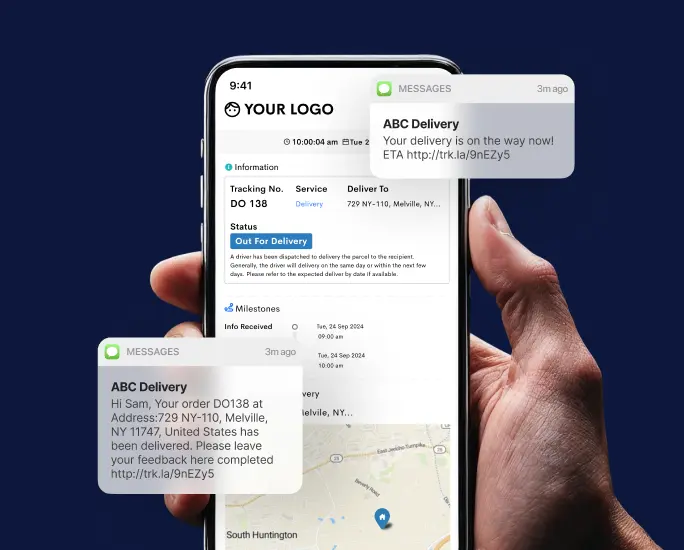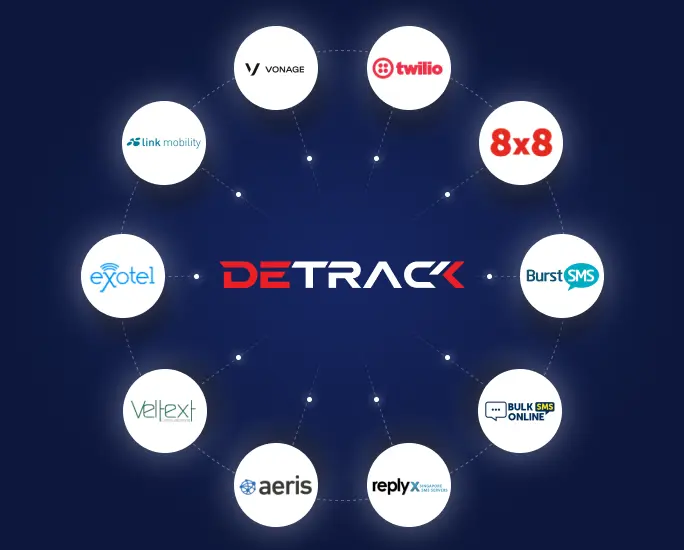Businesses constantly seek innovative ways to streamline operations, enhance customer experience, and stay ahead of the competition. One such strategy that is gaining traction is “Retail with Own Fleet.”
But what exactly does this term entail, and how can businesses leverage it effectively?
What Does Retail with Own Fleet Mean?
Retail with Own Fleet refers to the strategy employed by retail companies to manage their own transportation and delivery services for products to customers.
Instead of relying on third-party logistics providers or courier services, the retailer invests in establishing and maintaining its fleet of vehicles to handle the distribution of goods.
In essence, it involves the direct ownership and operation of vehicles to transport merchandise from distribution centers or warehouses to retail stores or to consumers’ doorsteps. This approach gives retailers greater control over the entire supply chain process, from inventory management to last-mile delivery.

Why Use It?
Here are some of the main reasons to have retail with own fleet:
- Control Over Customer Experience: By managing their own fleet, retailers can ensure that deliveries are made on time and that customer inquiries or issues are addressed promptly, leading to greater customer satisfaction.
- Cost Efficiency: While initially requiring significant investment in vehicles, infrastructure, and personnel, owning a fleet can ultimately result in cost savings over time compared to outsourcing delivery services.
- Flexibility and Customization: Retailers can tailor their delivery services to meet specific customer demands, such as offering same-day or scheduled deliveries, providing specialized handling for fragile items, or accommodating unique delivery instructions.
- Brand Representation: Delivery vehicles serve as mobile advertisements for the retailer’s brand, reinforcing brand identity and visibility in the communities they serve.
Advantages and Disadvantages
Advantages
- Control Over Logistics: Retailers have full control over the entire delivery process, allowing for greater transparency, accountability, and flexibility in responding to changing market conditions or customer demands.
- Enhanced Customer Experience: Direct management of the delivery process enables retailers to provide superior customer service, including real-time tracking, personalized communication, and efficient resolution of delivery issues.
- Cost Savings: While initial setup costs may be higher, owning a fleet can lead to long-term cost savings by eliminating third-party delivery fees and optimizing delivery routes for greater efficiency.
- Brand Loyalty and Trust: Consistent and reliable delivery experiences can strengthen customer loyalty and trust in the retailer’s brand, leading to repeat purchases and positive word-of-mouth recommendations.
Disadvantages
- Capital Investment: Setting up and maintaining a fleet requires significant upfront investment in vehicles, maintenance, insurance, and infrastructure, which may not be feasible for all retailers, especially smaller businesses.
- Operational Complexity: Managing a fleet involves coordinating multiple moving parts, including vehicle maintenance, driver scheduling, route optimization, and regulatory compliance, which can be challenging and time-consuming.
- Scalability Constraints: Rapidly scaling up or downsizing a fleet in response to fluctuating demand can be difficult and may require additional investment or restructuring of operations.
- Risk of Liability: Accidents, vehicle breakdowns, or delivery delays can expose retailers to liability risks, including property damage, injuries, or loss of customer trust, necessitating comprehensive insurance coverage and risk management strategies.

Myths & Misconceptions About Retail with Own Fleet
Despite its numerous benefits, Retail with Own Fleet often faces misconceptions and myths that can deter businesses from adopting this strategy. Let’s debunk some of the common myths and misconceptions surrounding Retail with Own Fleet:
Myth 1: It’s only suitable for large retailers.
Reality: While larger retailers may have the resources to invest in a fleet, Retail with Own Fleet is not exclusive to big corporations. Small and medium-sized businesses can also benefit from owning their delivery operations.
They can start with a modest fleet size and gradually scale up as their business grows. With careful planning and strategic investment, businesses of all sizes can leverage the advantages of managing their own fleet.
Myth 2: It’s less reliable than third-party logistics.
Reality: There needs to be more consensus that using third-party logistics providers is more reliable than managing your fleet.
However, with proper planning, investment in technology, and quality control measures, Retail with Own Fleet can be just as reliable, if not more so, than outsourcing delivery services. Retailers have greater control over their operations, allowing them to ensure consistency and reliability in delivery experiences.
Myth 3: It’s prohibitively expensive.
Reality: While upfront costs are involved in setting up and maintaining a fleet, Retail with Own Fleet can be cost-effective in the long run. Retailers can avoid paying markups and surcharges third-party providers impose, leading to potential cost savings over time.
Additionally, cost-sharing models available, such as leasing vehicles or partnering with other retailers, can help mitigate expenses and make fleet ownership more accessible.
Myth 4: It’s too complex to manage.
Reality: While managing a fleet comes with challenges like vehicle maintenance and driver management, technological advancements have made fleet management more accessible and efficient.
Fleet management software and telematics solutions can help retailers optimize route planning, monitor vehicle performance, and streamline operations. With the right tools and resources, Retail with Own Fleet can be effectively managed and scaled to meet business needs.
How to Choose the Best Fleet Management App
Define Your Requirements
- Identify your specific fleet management needs, such as route optimization, vehicle tracking, driver management, maintenance scheduling, fuel monitoring, and compliance reporting.
- Consider factors like the size of your fleet, industry regulations, geographic coverage, and integration with existing systems.
Research Available Options
- Conduct thorough research to identify fleet management apps that meet your requirements. Explore online reviews, industry publications, and recommendations from other fleet managers.
- Create a shortlist of potential apps based on features, user feedback, pricing, and reputation.
Evaluate Features and Functionality
- Assess the features offered by each fleet management app and prioritize those that are essential for your operations.
- Look for features such as real-time GPS tracking, route optimization, driver behavior monitoring, vehicle diagnostics, reporting and analytics, and customizable alerts.
- Consider whether the app offers mobile accessibility and user-friendly interfaces for both managers and drivers.
Check Compatibility and Integration
- Ensure that the fleet management app is compatible with your existing hardware, such as GPS devices, telematics systems, and onboard diagnostics (OBD) devices.
- Verify if the app integrates seamlessly with other software systems you use, such as accounting software, dispatching systems, or fuel card programs. Integration capabilities can streamline data sharing and improve overall efficiency.
Assess Data Security and Compliance
- Prioritize data security and compliance with industry regulations, such as GDPR (General Data Protection Regulation) or HIPAA (Health Insurance Portability and Accountability Act), if applicable.
- Verify the app’s data encryption protocols, user authentication measures, and compliance certifications to ensure the protection of sensitive information.
Consider Scalability and Support
- Evaluate whether the fleet management app can scale alongside your business growth. Consider factors like the maximum number of vehicles supported, pricing tiers for additional features or users, and flexibility to accommodate changing needs.
- Look for apps that offer reliable customer support, including technical assistance, training resources, and dedicated account management.
Trial and Demo
- Take advantage of free trials or demos offered by fleet management providers to test the software firsthand.
- Involve key stakeholders, such as fleet managers, drivers, and IT staff, in the evaluation process to gather feedback and ensure usability across the organization.
Cost Analysis
- Compare pricing plans and subscription models offered by different fleet management apps. Consider factors like upfront costs, recurring fees, additional charges for extra features or users, and long-term value.
- Calculate the return on investment (ROI) based on potential cost savings, improved efficiency, and enhanced productivity resulting from using the fleet management app.

How to Improve Retail with Own Fleet
- Streamline Operations: Automate manual processes, such as order processing, dispatching, and route planning, to reduce administrative overhead and improve overall operational efficiency.
- Optimize Delivery Routes: Use route optimization software to minimize driving distances, reduce fuel consumption, and maximize on-time deliveries, taking into account factors such as traffic patterns, delivery windows, and customer preferences.
- Invest in Driver Training: Provide comprehensive training programs for drivers on safe driving practices, customer service skills, and vehicle maintenance procedures to enhance driver performance, reduce accidents, and improve customer satisfaction.
- Solicit Customer Feedback: Regularly solicit customer feedback regarding their delivery experiences, preferences, and pain points to identify areas for improvement and implement actionable solutions to enhance service quality and satisfaction.
Future Trends
- Electric and Autonomous Vehicles: The adoption of electric and autonomous vehicles is poised to revolutionize the retail delivery landscape, offering lower operating costs, reduced environmental impact, and enhanced safety and efficiency.
- Last-Mile Innovation: Continued innovation in last-mile delivery solutions, such as drone delivery, robotic delivery vehicles, and locker-based pickup options, will enable retailers to offer faster, more convenient delivery options to meet evolving customer expectations.
- Integration of Data Analytics: Retailers will increasingly leverage data analytics tools to gain insights into customer preferences, delivery patterns, and operational performance, enabling more data-driven decision-making and targeted service improvements.
Conclusion
Retail with Own Fleet offers numerous benefits, including greater control over logistics, enhanced customer experience, and potential cost savings. Still, it also presents challenges such as capital investment, operational complexity, and liability risks.
By carefully assessing business needs, investing in technology and infrastructure, and implementing best practices in fleet management, retailers can optimize their delivery operations and stay competitive in an increasingly dynamic retail environment.
FAQs
Is owning a fleet cost-effective for small businesses?
While owning a fleet may require significant upfront investment, small businesses can still benefit from direct control over delivery operations by starting with a smaller fleet size and gradually expanding as their business grows.
How can retailers ensure the safety of their delivery drivers?
Retailers can prioritize driver safety by providing comprehensive training, implementing safety protocols, monitoring driver behavior using telematics devices, and regularly inspecting and maintaining vehicles to ensure roadworthiness.
What are the environmental implications of owning a fleet?
While traditional fuel-powered vehicles contribute to air pollution and carbon emissions, retailers can mitigate their environmental impact by transitioning to electric or hybrid vehicles, implementing fuel-efficient driving practices, and optimizing delivery routes to minimize fuel consumption.
How can retailers differentiate their delivery services from competitors?
Retailers can differentiate their delivery services by offering faster delivery options, providing real-time tracking and communication, ensuring consistent and reliable service, and personalizing the delivery experience to meet individual customer preferences.
What role will technology play in the future of retail with own fleet?
Technology will play a critical role in the future of retail delivery, enabling retailers to optimize route planning, enhance driver safety, improve operational efficiency, and offer innovative delivery solutions such as drone delivery and autonomous vehicles.









